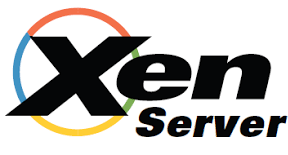Why “XenServer is still booting” message appears? Let’s see various causes and fixes for the issue in this article. Bobcares, as a part of our Server Management Service offers solutions to every query that comes our way.
Overview
- “XenServer is still booting”: More On
- Why XenServer Gets Stuck in Booting Mode?
- Troubleshooting Steps
- Tips to Prevent Boot Issues
- Conclusion
“XenServer is still booting”: More On
Having trouble with XenServer getting stuck in maintenance mode after a reboot or service restart? This guide simplifies the troubleshooting steps to get the XenServer running smoothly again. Let’s dive into what causes this issue and how to fix it.
Why XenServer Gets Stuck in Booting Mode?
Here are the main culprits behind XenServer failing to boot:

1. Corrupted System Files: Key system files can get corrupted due to improper shutdowns, hardware issues, or failed updates.
2. Storage Issues: Storage issues, like a failed disk or disconnected network storage, can prevent a successful boot.
3. Networking Problems: Incorrect network settings or failed network interfaces can halt the boot process, especially in pool setups.
4. XAPI Service Not Starting: XAPI, the core management service, may fail to start if its files are corrupted or dependencies are missing.
5. Hardware Incompatibility: Faulty or incompatible hardware, like NICs or RAID controllers, can cause XenServer to hang.
6. Missing or Incompatible Drivers: Some devices need specific drivers. If these are missing, XenServer might get stuck.
7. Boot Loader Issues: Problems with the GRUB boot loader or kernel configuration can lead to boot errors.
8. Pooled Environment Dependencies: In pooled environments, boot issues can arise if a host can’t connect to the pool master.
Troubleshooting Steps
If we see the message “XenServer is still booting,” here’s a quick troubleshooting guide:
1. Access the Console Directly
i. Connect to the server console directly or via remote management (iLO, DRAC, or IPMI).
ii. Look for error messages in the console output that could explain the boot delay.
2. Check System Logs
i. Open different console terminals with Alt + F2 or Alt + F3.
ii. Use these commands to view logs:
Boot logs: cat /var/log/boot.log
XenServer logs: cat /var/log/xensource.log
XAPI logs: cat /var/log/xapi.log
iii. Look for errors in these logs that indicate the source of the issue.
3. Verify Storage Status
i. Check storage device status using fdisk -l to confirm all disks are detected.
ii. List storage repositories (SRs) with xe sr-list and ensure they’re accessible.
4. Inspect Network Configuration
i. Run ip addr show to check network interface configurations.
ii. Ensure static IPs or DHCP are set correctly.
iii. For pooled servers, verify network connectivity with the pool master.
5. Reboot in Safe Mode
i. During boot, press Shift or Esc to access the GRUB menu.
ii. Select an older kernel if available or boot in single-user mode to identify issues.
6. Restart XAPI Service
i. Run systemctl restart xapi to restart the XAPI service.
ii. Check the status with systemctl status xapi and refer to /var/log/xapi.log if there are issues.
7. Repair or Reinstall XenServer
i. If all else fails, boot from the XenServer installation media and use the Repair option.
ii. As a last resort, back up the data, then reinstall XenServer, taking care to avoid overwriting important storage repositories.
Tips to Prevent Boot Issues
- Keep tabs on local and network storage health to catch problems early.
- Keep XenServer, drivers, and management tools up-to-date to avoid software conflicts.
- Use the Citrix Hardware Compatibility List (HCL) to confirm that the hardware works with the XenServer version.
- Always follow proper shutdown procedures to prevent file corruption.
- For pool environments, ensure network settings are correct and that the pool master is reachable.
These steps should help us troubleshoot and fix XenServer maintenance mode issues effectively. Regular maintenance and staying proactive with updates and checks will minimize future risks.
[Want to learn more? Click here to reach us.]
Conclusion
By following these troubleshooting steps from our Techs and maintaining regular checks on storage, network, and system updates, we can keep XenServer running smoothly and avoid frustrating maintenance mode issues. Proactive care and prompt attention to errors will ensure reliable performance from the XenServer environment.




0 Comments